Find article
Articles
- Odkryj swój twórczy potencjał. Czy kreatywności można się nauczyć?
- Metafora w wyborze ścieżki zawodowej
- Wszystkie puzzle na swoim miejscu
- Jak cię widzą, tak cię piszą! O sile personal brandingu
- Przeznaczenie? Rozpoznaj zainteresowania zawodowe
- Pracuj nad sobą, czyli 10 sposób jak radzić sobie z błędami
- Chcesz, żeby ludzie od ciebie nie uciekli? – zmień komunikację
- Akceptuj i działaj, czyli 15 skutecznych metod radzenia sobie ze stresem i emocjami
- 10 kroków od gadania do rozmawiania
- Żyj odważnie, czyli 10 sposobów, jak przejść przez zmiany
- Negocjacje warunków w przyszłym miejscu pracy
- Interests in the CV
- Recruitment savoir-vivre
- Qualifications and professional competences
Model of Professional Competences
Model developed by the Career Centre of Nicolaus Copernicus University in Toruń as part of the project 'Competences for the future - development of the professional potential of students and graduates at Nicolaus Copernicus University' (2009-2013) co-financed by the European Union under the European Social Fund ESF
professional competences | competency model | professional development

Competence is a resultant of knowledge, skills and attitudes. Competences developed in a proper way allow employees to realize professional tasks on required level.
A competency model is a set of competencies particularly relevant to the functioning of a particular company or organization that has developed and applies it. Competency models of different companies may differ in the selection of key competencies, but the principle of their operation remains the same.
Groups of competencies
The NCU Model of Professional Competences consists of six basic groups of competences, which are depicted in a diagram of the human figure, where individual parts have been assigned to specific groups of competences. There are four key descriptive competences in each group.
| HEAD | CAPABILITY |
Competences describing mainly the way of thinking - searching and collecting data, analyzing information, drawing conclusions and forwarding them to the surroundings.
|
| BOTTOM | RESISTANCE |
Competences specifying one’s ability to work in difficult conditions under widely understood stress (connected with both internal and external indicators, including those referring to social relations).
|
| RIGHT ARM | TASKS |
Competences describing the way of tasks realization - orientation on achieving aims and quality of work effects.
|
| LEFT ARM | PEOPLE |
Group of competences describing how a particular person cooperates with others, builds and makes use of interpersonal relations during realization of business goals.
|
| RIGHT LEG | MOTIVATION |
Group of competences referring to indicators which motivate us to act in the first place and to the level of engagement in task realization, determining why and with what intensity a person is willing to work.
|
| LEFT LEG | TOOLS |
Bank of competences concentrated on the level of usage of particular methods and tools, aiming in increasing work
efficiency (planning time, organizing work, coordinating tasks) as well as achieving complicated goals with a support of a team (delegation of duties, management).
|
Key competencies
Inside the groups are four key competences each describing:
CAPABILITY – How do I make the analyses?
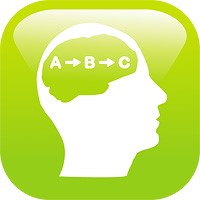 |
Creativeness | using creative thinking in order to improve the existing solutions or initiate new solutions as well as propagate and realise new ideas |
 |
Analitical thinking | perceiving of numerous aspects of reality, effective work with a lot of information, perceiving of relationships and drawing reliable conclusions from data available |
 |
Flexibility | quick and prompt change of conduct in response to changing conditions as well as maintenance of the high level of a given tasks during changes |
 |
Communicativeness | effective communicating by conveying one’s own thoughts in a manner comprehensible to other people as well as careful and active listening to other people’s statements, both oral and written |
MOTIVATION - Why do I act?
 |
Aiming at development | constant acquisition of new knowledge and experience and willingness to improve on a continuous basis and implement positive changes in one’s own career |
 |
Commitment | activeness and showing one’s initiative, determination to overcome difficulties and readiness to sacrifice, if necessary |
 |
Motivating others | skilful motivating of colleagues to increase their efforts and achieve targets |
 |
Professional attitude and ethics | building of one’s own and company’s reliability by undertaking activities, which comply with one’s own ethic standards and company’s ethic standards as well as accepted standards of work |
RESISTANCE – How do I cope with difficulties?
 |
Persistence and consistency | timely and consistent realisation of tasks entrusted, including difficult and monotonous tasks |
 |
Assertiveness | expressing of one’s own opinions and needs in a manner, which does not interfere with other people’s rights or feelings, including, in particular, the ability to defend one’s own interests and, at the same time, maintain good relations with colleagues, customers etc |
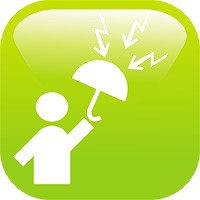 |
Stress tolerance | acting effectively in hard conditions (heavy workload, conflict, high requirements) |
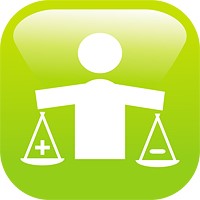 |
Taking responsibility | readiness to take personal responsibility for realisation of tasks and duties entrusted as well as incur consequences of one’s own or a team’s work, including both positive and negative consequences |
TOOLS – How do I act?
 |
Planning and coordination | clear setting of priorities and tasks for all team members and consistent coordination of the same by dividing complex tasks into stages, determining of needs as well as ensuring of adequate means and support in realisation |
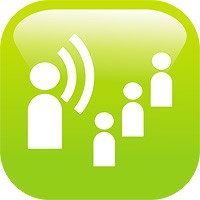 |
Delegation | delegating responsibility for both routine and standard tasks to employees as well as information, means and authorisations necessary for realisation of the same |
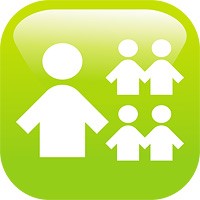 |
Team management | creation and management of teams, understanding of their needs and motivating them for most effective activities |
 |
Work organization | managing one’s own time and organising one’s own work in a planned and systematic manner, which makes it possible to achieve targets |
TASKS – How do I realize tasks / goals?
 |
Focus on target | persistent aiming at a company’s targets by realisation of individual targets (title) and achieving best results by planning, constructive approach to problems and searching for opportunities to exceed targets |
 |
Conscientiousness and precision | focusing on best performance of a given activity, taking care of details and high effects of work (products, services etc.) |
 |
Self-reliance | ability to achieve agreed targets on one’s own, including, making necessary decisions |
 |
Focus on business | searching for business opportunities and making decisions connected with risk and oriented on profitability of undertakings on the basis of the current knowledge about the market, competition and calculated risk |
PEOPLE – How do I cooperate with others?
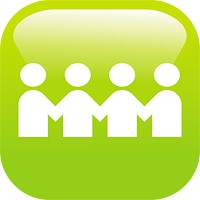 |
Team work | establishing and maintaining of long-term and fruitful cooperation with other employees |
 |
Building relations | establishment, shaping and maintaining of positive interpersonal relations satisfactory for all parties |
 |
Learning and training | readiness and ability to convey one’s knowledge to others in an effective manner as well as share one’s experience with others |
 |
Focus on customer | awareness and understanding of customers’ needs and fulfilling as well as exceeding of their expectations. If necessary, active searching for and acquisition of new customers for a company |
Level of competence
A three-point scale can be used to describe the level of competence held and its impact on one's own or a team's work:
| Level | Impact on own or team's work | Characteristics |
| 1 good | Positive but limited – behaviours within the scope of a given competence partially affecting the achievement of objectives | acting in a correct direction however requiring support, stimulus, outside help; lack of independence in acting |
| 2 optimal | Significant, unsupported – behaviours within the scope of a given competence enabling full achievement of objectives | independent usage of knowledge and skills, efficient and effective performance, pursuit and achievement of goals |
| 3 expert | Improving – behaviours within the scope of a given competence aiming at improving the work or exceeding the set goals | helping, supporting, inspiring, crossing borders, improving work, creating new methods of performance |
What does the competency model serve employers for?
The competence model is used to comprehensively assess the competences of job candidates. During the recruitment process, the professional competences of the candidates and their compatibility with the requirements of the position and with company policy are assessed.
Competency models are also used in many areas of management: e.g. team building, setting goals, defining requirements, planning promotions, inspiring and motivating, controlling, periodic evaluation, developing employees' skills.
What does the competency model serve job candidates for?
Knowledge of competency-based job descriptions enables potential job candidates to:
- find competency-matched jobs,
- analysing the requirements of employers concerning the desired competences, the demand for soft competences in various industries, professions, positions,
- preparation of a plan for development of competences desired by employers for specific positions,
- delineation of professional development paths taking into account the development of competences particularly useful in the labour market.
